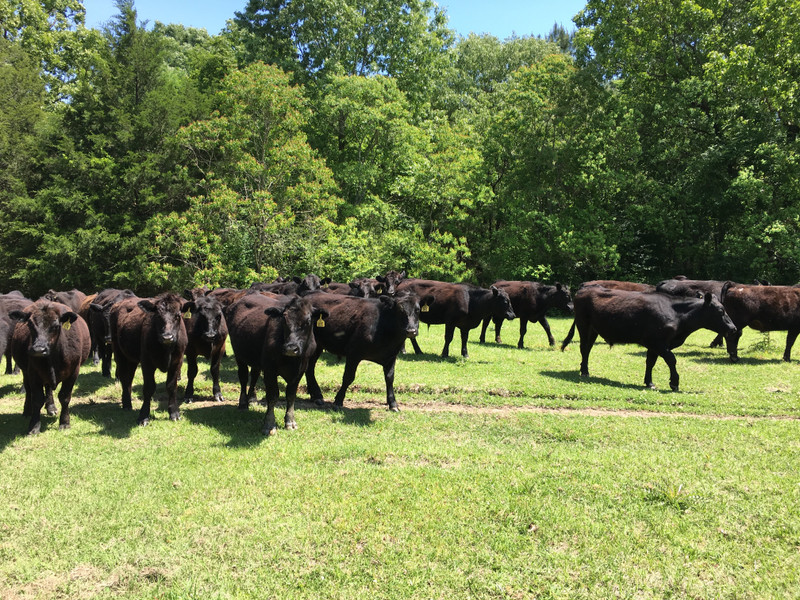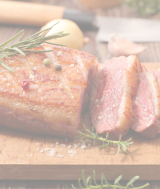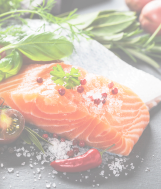Health Benefits of Grass fed Meat

100% grass-fed, regenerative meat isn’t just healthy for the environment- it’s healthy for our bodies too. Better for the animal, better for us, and better for the environment, it offers a nutritional profile and natural integrity to suit today’s contemporary and conscientious kitchens.
Our secret sauce is in our soil.
We cannot be fed unless the soil is fed. Agricultural soils have lost half their nutrients in the past 200 years, and this reflects in the nutritive value of the crops they grow. Unhealthy soil breeds unhealthy crops, which breed unhealthy animals and unhealthy humans. Soil health is the only answer to re-balancing the innate nutritional gifts of our food. One of the best ways to enhance soil health is through regenerative grazing, a practice that only KOL Foods uses in the kosher world.
But isn't "just a little" grain close enough?
Although "just a little" grain may not sound like much, it makes a big difference. Grass-fed beef's benefits disappear after just a short while on grain; in just 30 days of switching a cow from a grass fed diet to a grain-fed diet, the meat suffers dramatically, including a far more inflammatory fatty-acid composition and absence of the antioxidant content that is otherwise present in the meat of grass-fed animals.
Top 10 attributes of 100% grass fed meat:
- Lower in total fat
- Higher in beta-carotene
- Higher in vitamin E (alpha-tocopherol)
- Higher in the B-vitamins thiamine and riboflavin
- Higher in the minerals calcium, magnesium, and potassium
- Higher in total omega-3
- Better ratio of omega-6 to omega-3 fatty acids
- Higher in conjugated linoleic acid
- Higher in vaccenic acid
- Lower in the saturated fats linked with heart disease
Antibiotics, hormones and animal by-products.
Up to 70% of on-farm antibiotics go to animals that aren't sick. This misuse breeds drug-resistant super-bugs which make human diseases harder to cure, our drugs useless, and add billions to our health care costs. Factory farms use both antibiotics and hormones to cause the animals to grow faster, which leads to higher profits. Overcrowding also means that animals fight and suffer from cuts and abrasions from their cages, so all the animals are treated with antibiotics to minimize losses from infections and the spread of diseases. KOL Foods animals have the space they need to roam and avoid all the issues of overcrowding. This means our 100% grass-fed cattle tend to be much healthier and need less medical intervention. There are no antibiotics, hormones, or animal by-products in KOL Foods products.
1. Lower in total fat
Cows were designed to eat grass, which means that they process it and maintain a healthy digestive system. Feedlot cattle are finished with a grain diet, mainly corn and soy, which makes for a quick weight gain and a higher percentage of fat in the tissue.
Grain-fed cattle also receive hormones, again to make them grow fast and gain weight quickly. This also results in a higher fat content in the muscle. Our pasture-raised cattle are not given artificial hormones and spend a lot more of their time moving around, so they are naturally leaner than their feedlot counterparts.
Since grass-fed meat is lean, it is also lower in calories than grain-fed.
2. Higher in beta-carotene
Research has shown that meat from pasture-fed steers contains significantly more beta-carotene than grain-fed animals. This is probably a result of the high beta-carotene content of fresh grasses as compared to cereal grains
Beta-carotenes are precursors of retinol (Vitamin A), a critical fat-soluble vitamin that is important for normal vision, bone growth, reproduction, and cell division. The overall integrity of skin and mucous membranes is maintained by Vitamin A, creating a barrier to bacterial and viral infection. In addition, vitamin A is involved in the regulation of immune function by supporting the production and function of white blood cells.
3. Higher in vitamin E (alpha-tocopherol)
The meat from the grass-fed cattle is four times higher in vitamin E than meat from feedlot cattle.
In humans, vitamin E is linked with a lower risk of heart disease and cancer. This potent antioxidant may also have anti-aging properties. Most Americans are deficient in vitamin E.
4. Higher in B-vitamins thiamine and riboflavin
Thiamine, also known as Vitamin B1, helps to maintain the body’s energy stores, coordinates the activity of nerves and muscles, and supports proper heart function. Riboflavin, Vitamin B2, helps protect cells from oxygen damage, supports cellular energy production, and helps to maintain the body’s supply of other B vitamins.
5. Higher in minerals: calcium, magnesium, and potassium
Calcium helps maintain healthy, strong bones, supports the proper functioning of nerves and muscles and helps blood to clot. Magnesium helps to relax nerves and muscles, builds and strengthens bones and keeps the blood circulating smoothly. Potassium helps to maintain the proper electrolyte and acid-base balance in the body and helps lower the risk for high blood pressure.
6. Higher in total Omega-3
Omega-3 and Omega-6 fatty acids play an important part in growth and metabolism. They can’t be synthesized by the human body, so they have to come from our diet. Omega-3's reduce inflammation, lower the amount of serum cholesterol and triglycerides, prevent excess clotting, and reduce the risk of cancer.
7. Better ratio of Omega-6's to Omega-3's
While both Omega-3 and Omega-6 fatty acids are important individually, they also work in tandem and the ratio is critical. While the body requires some Omega-6, an excess can foster cardiovascular disease, cancer, and autoimmune disorders, which are suppressed by Omega-3's. The proper ratio can reduce the risk of those and other chronic illnesses.
8. Higher in conjugated linoleic acid (CLA)
CLA is another potent weapon in the arsenal against chronic disease. CLA can reduce cancer, high blood pressure, cardiovascular disease, osteoporosis, and insulin resistance. Grass-fed beef fosters bacteria that synthesize more CLA and CLA precursors than their grain-fed counterparts.
9. Higher in vaccenic acid
Vaccenic acid is a trans fat that occurs naturally in ruminant animals. Vaccenic acid protects against atherosclerosis, a contributing factor in cardiovascular disease. Vaccenic acid also acts as a precursor to CLA.
10. Lower in saturated fats linked with heart disease
Saturated fats (cholesterol, triglycerides, and low-density proteins – LDL ("bad” cholesterol) all play a significant role in heart disease and stroke.
What about poultry?
KOL Foods sells the only organic, pastured kosher chicken on the market. While the below is information about the benefits of pastured chickens, our chickens have the additional benefits of being antibiotic-free and given feed that is free from hormones, chemicals, and animal by-products.
- Much like their ruminant friends, 100% pasture-raised poultry is significantly lower in fat than industrial poultry, both overall and specifically in saturated fats.
- Studies have shown that pasture-raised poultry also has significantly higher amounts of vitamin A, which is important for the immune system, vision, and organ function.
- Pasture-raised poultry, like pasture-raised ruminants, also has a much higher amount of total Omega-3 fatty acids.
The choice is clear –100% grass-fed meat is the healthy way to eat.
Feel Good About the Meat You Eat.








